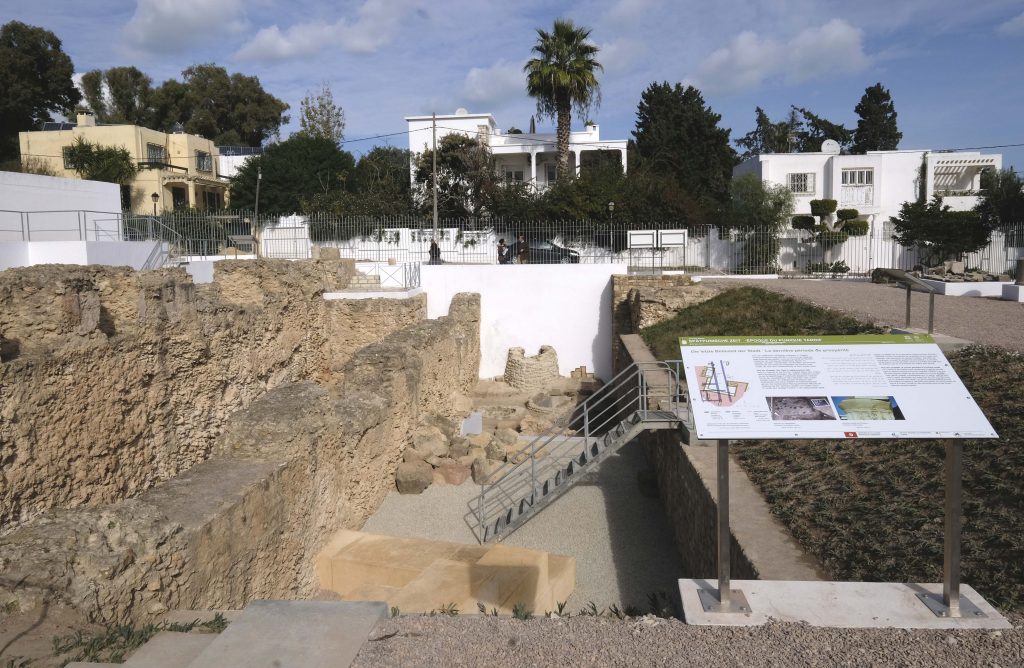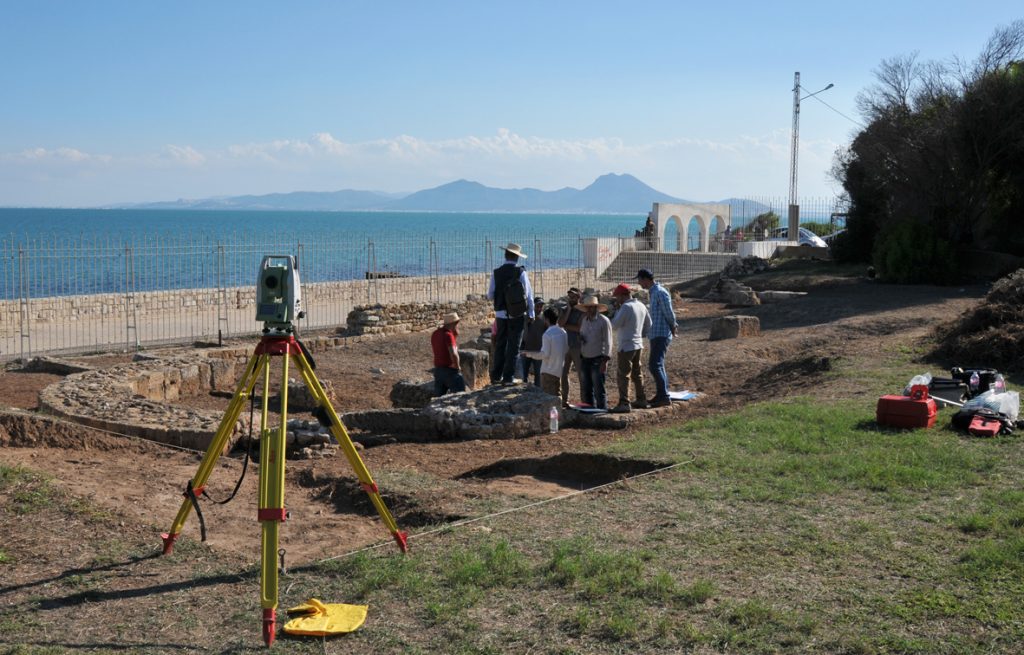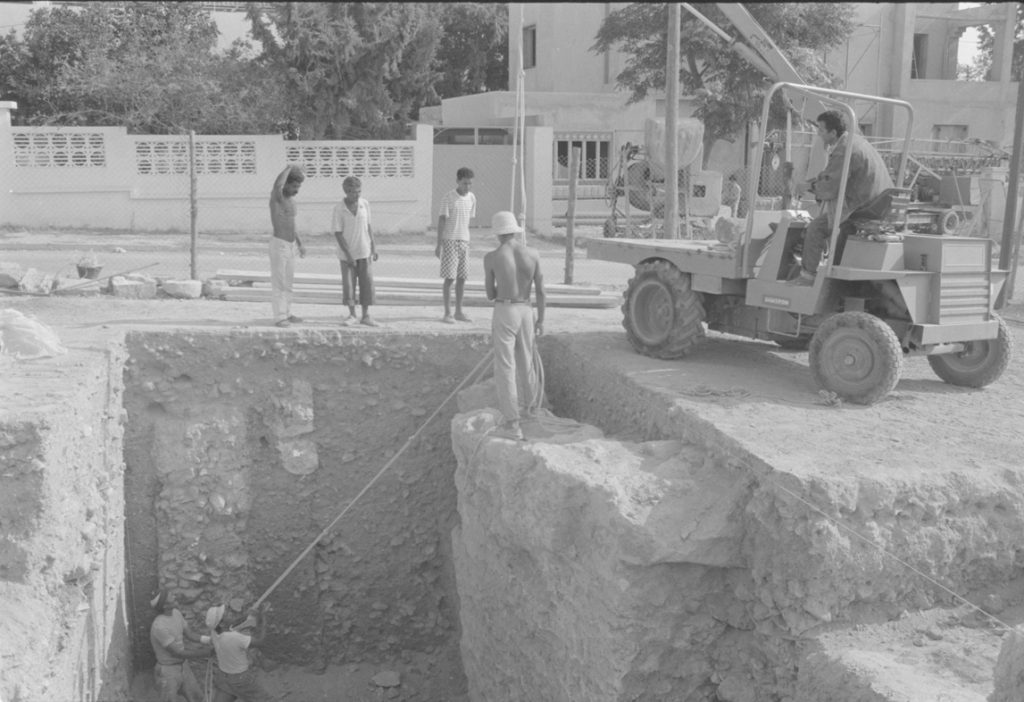The DAI has been active in Carthage for more than 40 years. The ancient city, located on the Gulf of Tunis in North Africa, was founded in the 9th century BC by the Phoenicians, developed into a maritime and commercial power, was destroyed by Rome in 146 BC, and was re-established as a Roman colony under Augustus. Archaeological excavations have made several millennia of urban history visible.

The first excavations were carried out by the construction researcher Friedrich Rakob from the Rome department in the 1980s. The excavation areas are now accessible as archaeological parks: in the district of Didon, on Rue Ibn Chabâat, cuts more than 8 meters deep offer unique insights into the past. The use of the area can be traced from around 750 BC until the early Christian period. The different periods in Carthage can be viewed like in a time lapse.
In the Magon district, located directly on the sea, the seawall and residential buildings from the Punic period are visible. Today the area is also used for systematic training of young Tunisian archaeologists, monument conservators, and architects.

Young Tunisian academics are trained in the Magon district. 
From 1984 to 1996, Friedrich Rakob conducted the excavations on Rue Ibn Chabâat in the center of Punic Carthage.